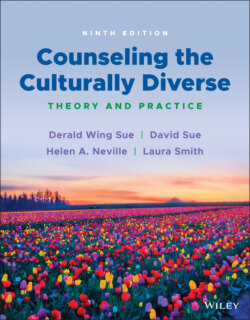Читать книгу Counseling the Culturally Diverse - Laura Smith L. - Страница 119
IMPLICATIONS FOR CLINICAL PRACTICE
Оглавление1 Be aware that racial, gender, and sexual orientation microaggressions are a constant reality in the lives of culturally diverse groups and take a major psychological toll.
2 Be aware that everyone has engaged in and continues to engage in unintentional microaggressions. For helping professionals, these microaggressions may serve as impediments to effective multicultural counseling and therapy (MCT).
3 Entertain the notion that culturally diverse groups may have a more accurate perception of reality than you do, especially when it comes to issues of racism, sexism, or heterosexism. Try to understand worldviews and sociocultural realities, and don't be quick to dismiss or negate racial, gender, and sexual orientation issues.
4 If your culturally different client implies that you have engaged in a microaggressive remark or behavior, engage in a nondefensive discussion and try to clarify the situation by showing you are open and receptive to conversations on race, gender, and sexual orientation. Remember, it's how the therapist “recovers,” not how he or she “covers up” that is important.
5 Familiarize yourself with the literature on microinterventions and the anti‐bias actions that targets, allies, and bystanders can take to disarm them and to contribute to a sense of empowerment and self‐efficacy.
Microtraining Series Video: Overcoming Personal Racism: What Can I Do?
Microtraining Series Video: The Psychology of Racism: Where Have We Gone Wrong?
